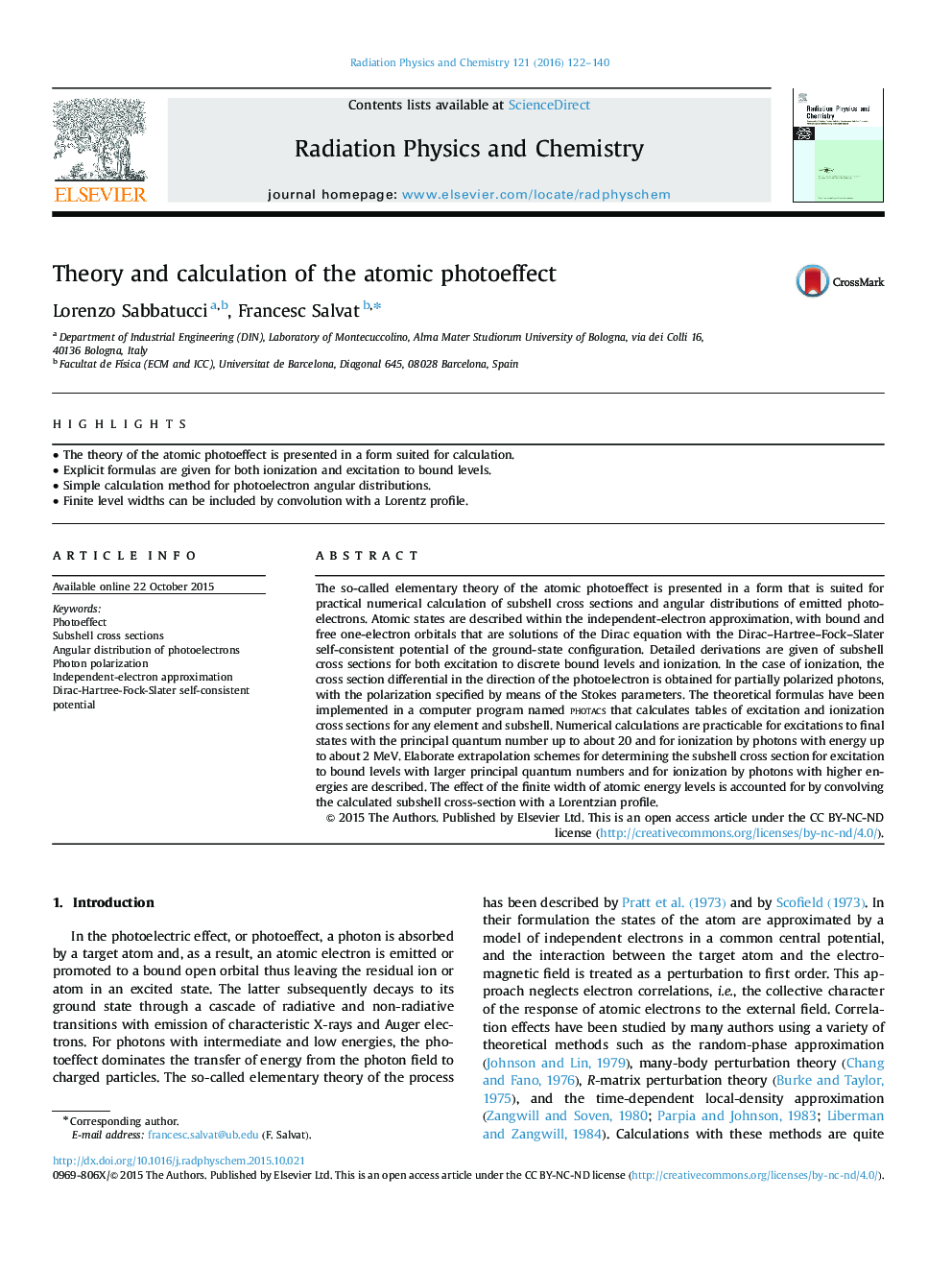| Article ID | Journal | Published Year | Pages | File Type |
|---|---|---|---|---|
| 8252280 | Radiation Physics and Chemistry | 2016 | 19 Pages |
Abstract
The so-called elementary theory of the atomic photoeffect is presented in a form that is suited for practical numerical calculation of subshell cross sections and angular distributions of emitted photoelectrons. Atomic states are described within the independent-electron approximation, with bound and free one-electron orbitals that are solutions of the Dirac equation with the Dirac-Hartree-Fock-Slater self-consistent potential of the ground-state configuration. Detailed derivations are given of subshell cross sections for both excitation to discrete bound levels and ionization. In the case of ionization, the cross section differential in the direction of the photoelectron is obtained for partially polarized photons, with the polarization specified by means of the Stokes parameters. The theoretical formulas have been implemented in a computer program named photacs that calculates tables of excitation and ionization cross sections for any element and subshell. Numerical calculations are practicable for excitations to final states with the principal quantum number up to about 20 and for ionization by photons with energy up to about 2Â MeV. Elaborate extrapolation schemes for determining the subshell cross section for excitation to bound levels with larger principal quantum numbers and for ionization by photons with higher energies are described. The effect of the finite width of atomic energy levels is accounted for by convolving the calculated subshell cross-section with a Lorentzian profile.
Keywords
Related Topics
Physical Sciences and Engineering
Physics and Astronomy
Radiation
Authors
Lorenzo Sabbatucci, Francesc Salvat,
